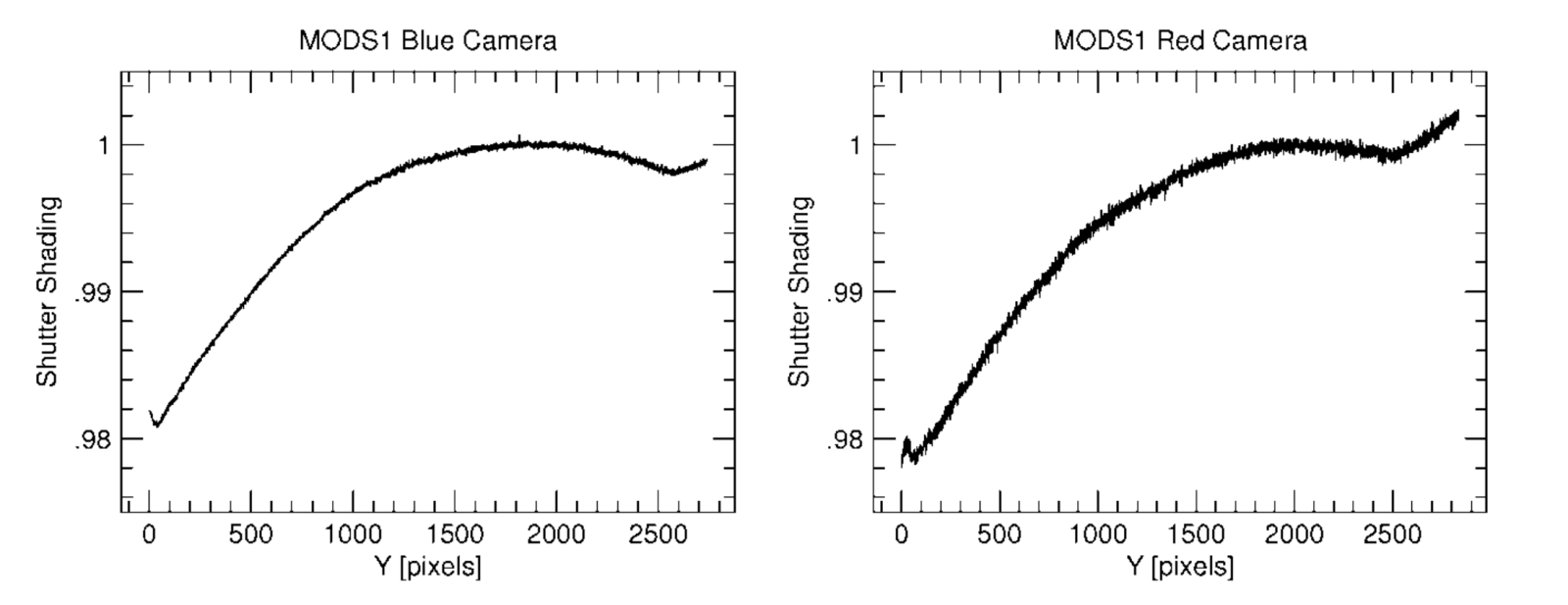Shutter
Camera Shutter
Each camera has an integrated shutter consisting of two blades in a barn-door configuration that opens along the long-slit axis. This gives no shading along the dispersion axis and only minimal shading along the slit axis. The open/close time results in a minimum exposure time of 0.5 seconds. In general, though, we have adopted a minimum working exposure time of 1.0 seconds, but a 0.5 second exposure time can be requested if necessary. 
Shutter Lag
There is a measured time lag of 1.62±0.05 seconds between the time recorded in the FITS header DATE-OBS datum and when the shutter is actually opened by the CCD controller such that:
tactual =DATE-OBS + 1.62 sec&
The range of shutter lag is between 1.55 to 1.68 seconds. There is no significant difference in the lags measured for the blue and red camera shutters, and no correlation with the size of the image being read out. The origin of the shutter lag is buried in the depths of the CCD controller code. Please keep this in mind if your observations require precision (<1 minute) timing. Removing this lag is in the works for future software updates.
Shutter Shading Function
The finite shutter opening time, and the asymmetric geometry of the shutter behind the offaxis Maksutov-Schmidt corrector lens, means that there is a correspondingly asymmetric shutter shading function along the slit, but no shading in the dispersion (detector X) axis. At most the shutter shading function manifests as a 2% gradient from bottom to top in a 1 second integration. This gradient will decline linearly with increasing exposure time. It is sufficiently small that for typical spectroscopic exposure times, even standard stars, it may be safely ignored.


